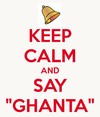Success is a dish best served cold.
In this case, the dish is momo, a hot Himalayan dumping that is a staple in the Nepalese and Tibetan community in Queens. For more than a decade, momo has been sold pretty much everywhere in Woodside and Jackson Heights.
Always hot. Always dry.
But in January, a momo seller named Januka Shrestha did something radical: She took her normal momo and covered them in cold broth.
And to paraphrase Robert Frost, that has made all the difference in the world of Himalayan momo in Queens.
Let's back up for a second. Shrestha's move will sound downright pedestrian to anyone who has spent any time in Kathmandu, the capital of Nepal. There, momo in broth — known as jhol momo — are as ubiquitous a street food as hot dogs and pretzels are in New York City.

Jhol momo is a Nepalese street food that has finally made it to America, thanks to the owners of Momochai in Woodside, Queens.
(Anuz Thapa)Yet when Nepalese and Tibetan restaurants started proliferating in Queens more than a decade ago, they sold only momo with no soup. Jhol momo — hot dumplings with a cold sesame, garlic, tomato and onion broth — remained in the homeland.
So let's go over that again: Opening a Nepalese momo restaurant in New York City and not selling jhol momo would be the same as if I, an inveterate New Yorker, opened "Gersh Kuntzman's New York City Food Restaurant" in downtown Kathmandu and sold burgers, French fries, shakes, knishes, pretzels, but no hot dogs. Such a restaurant would no doubt be incredibly successful (hey, it's me!), but something would be missing.
So it wouldn't take long for some other New York legend (you know, like a Mario Batali) to come along and open a competing restaurant offering the exact same menu — plus hot dogs.
And that's what Shrestha did at her restaurant, Momochai.
"We were looking for something which could click with customers," said Shrestha, the Mario Batali in this extended culinary metaphor. "All of a sudden, we thought 'jhol momo.'"
It did more than click. It exploded. A local Nepalese journalist, Ang Kami Sherpa, did a Facebook Live video on Feb. 7 about the jhol momo at Shrestha's restaurant. The post got more than 21,000 views — and within days, Momochai was selling 300 plates of jhol momo per day.
"People came from California, Virginia, Washington, D.C., to try our jhol momo," she said.
Let me reiterate — again: This is the equivalent of me going thousands of miles out of my way for a hot dog. But Shrestha's simple menu change started a restaurant revolution.
"To be honest with you, I was skeptical about jhol momo," said Mohan Gyanu Thapa, an owner of Hamro Bhim's Café in Jackson Heights and a friend of Shrestha's. "But when I found out about my friend's success, we started it, too."
Thapa says she sells around 200 plates of momo daily — 75% of which are jhol momo.

Momochai co-owner Januka Shrestha started serving jhol momo — and started a revolution in Queens.
(Anuz Thapa)Another Jackson Heights restaurant, Namaste Tashi Delek, says its business is up 50% because of the jhol momo.
"I never thought of jhol momo because I thought our varieties of momos were enough for customers," said Mohan Baruwan, the owner of the 10-year-old restaurant. "One day I heard one of my customers asking for jhol momo. I thought, 'If I don't sell this, my business might suffer.' I am a businessman, so I quickly started jhol momo."
For some reason, a few Himalayan restaurants still oppose the jhol momo, which they see as a fad.
"Look, we don't sell that Nepali momo," sniffed Rakshya, a manager at Himalayan Yak, a venerable Tibetan restaurant on Roosevelt Ave. "We are going to stick to the Tibetan momo."
OK, do that. But take it from a guy who downed four plates of jhol momo at Momochai the other night, these anti-jhol counter-revolutionaries are on the wrong side of history.
Jhol momo are here to stay. Now, if Mario Batali and I could only join forces...
With Anuz Thapa


















